Bulbs
Flower Basics
Flower Beds & Specialty Gardens
Flower Garden
Garden Furniture
Garden Gnomes
Garden Seeds
Garden Sheds
Garden Statues
Garden Tools & Supplies
Gardening Basics
Green & Organic
Groundcovers & Vines
Growing Annuals
Growing Basil
Growing Beans
Growing Berries
Growing Blueberries
Growing Cactus
Growing Corn
Growing Cotton
Growing Edibles
Growing Flowers
Growing Garlic
Growing Grapes
Growing Grass
Growing Herbs
Growing Jasmine
Growing Mint
Growing Mushrooms
Orchids
Growing Peanuts
Growing Perennials
Growing Plants
Growing Rosemary
Growing Roses
Growing Strawberries
Growing Sunflowers
Growing Thyme
Growing Tomatoes
Growing Tulips
Growing Vegetables
Herb Basics
Herb Garden
Indoor Growing
Landscaping Basics
Landscaping Patios
Landscaping Plants
Landscaping Shrubs
Landscaping Trees
Landscaping Walks & Pathways
Lawn Basics
Lawn Maintenance
Lawn Mowers
Lawn Ornaments
Lawn Planting
Lawn Tools
Outdoor Growing
Overall Landscape Planning
Pests, Weeds & Problems
Plant Basics
Rock Garden
Rose Garden
Shrubs
Soil
Specialty Gardens
Trees
Vegetable Garden
Yard Maintenance
What Is a Bayberry Shrub?
What Is a Bayberry Shrub?. Bayberry bushes are tough, hardy plants that have pleasantly scented foliage and berries. Colonial Americans used the berries to add scent to candles for use during special occasions such as Christmas, since collecting and rendering the berries was a big job. Bayberry plants are native to the continental United States and...
Bayberry bushes are tough, hardy plants that have pleasantly scented foliage and berries. Colonial Americans used the berries to add scent to candles for use during special occasions such as Christmas, since collecting and rendering the berries was a big job. Bayberry plants are native to the continental United States and grow vigorously along the eastern coast and throughout the south. The Pacific Bayberry, also called the California Wax Myrtle, is native to Canada, Washington and Oregon. Bayberry shrubs are known by a variety of common names such as candleberry, tallow shrub, waxberry and tallow berry, all of which seem to prove its worth as a plant widely used in candle making over the centuries.
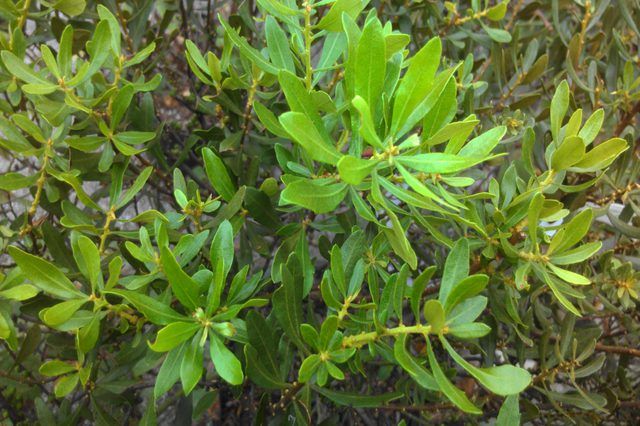
A bayberry bush usually has an upright, rounded shape, but its aroma is probably its most identifiable feature. It can grow to a height of five to eight feet, and has no central stem--it has many branches instead that spread outward and upward. Its oval leaves are dark green, waxy and grow to a length of one to four inches. Bayberry leaves are called "simple," which means they do not have any parts or sections. They also alternate, in that they do not grow one leaf opposite across from the other, but alternately down a stem. The bushes are usually evergreen but some species may lose some, but not all, of their leaves during the fall and winter. The female plants of many bayberry bush species produce very small, waxy, gray-blue berries in the fall. Small, modest blooms appear on the plants in the early spring.
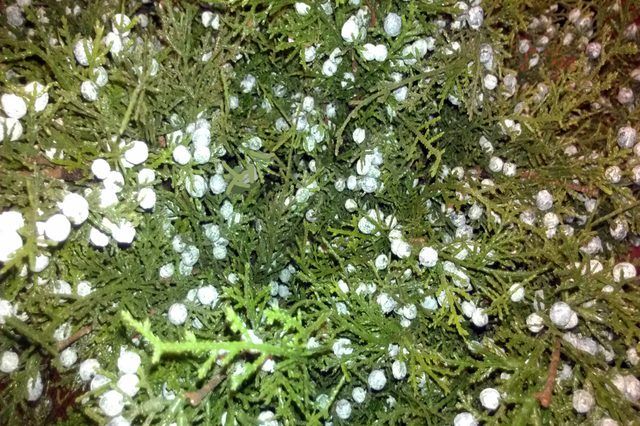
Growing in poor, sandy or clay soils and in salty areas near the ocean, bayberry bushes are incredibly tolerant plants that can thrive in areas where many plants can not. Because of this, bayberry plants don't grow particularly well in rich, well-fertilized garden soils, though they seem to be plants that enjoy extremes, as they also prefer bogs, marshland and wet woodlands. They grow in areas along roadsides, on sand dunes near mid-Atlantic beaches and in old, abandoned fields.
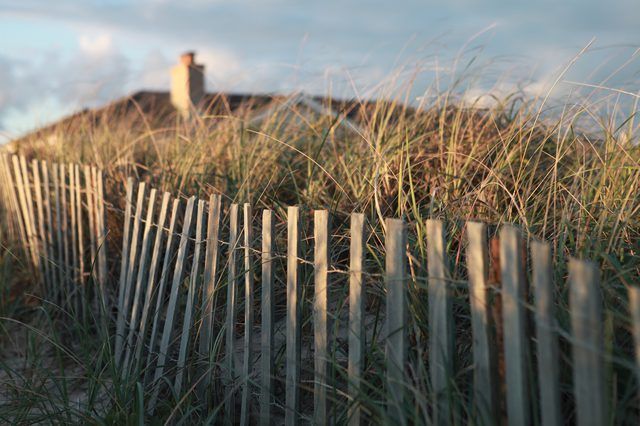
Once established, bayberry bushes do well and can even be hard to tame. They tend to grow in groups and make excellent windbreaks and hedges. Bayberry bushes are intolerant of other vegetation around them, so any plants that could be squeezed out by the vigorous, spreading bayberry should be moved or kept separate. The bushes prefer light, unfertilized soil. As bayberry bushes age and grow bare at the base, they may require ruthless pruning of the main branches in the spring. Each waxy fruit of the bayberry contains quite a number of seeds that can be planted to produce more bayberry plants. In order for the seeds to germinate more quickly, the waxy coating needs to be scraped off. However, in nature, the fruit, waxy coating and all, drops to the ground and eventually sprouts. Bayberry bushes can also be propagated by cutting or dividing smaller sucker shoots.
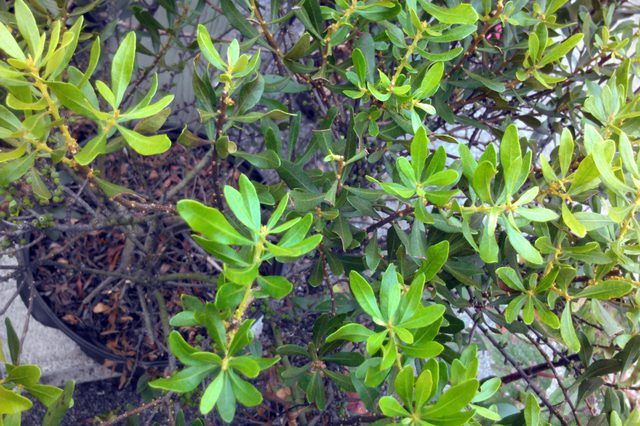
Birds love the berries of the bayberry bush. While not a bird's first berry choice because of the bitter taste, the fruits of the bayberry are an important food source for game birds like quail, pheasant and ruffed grouse, as well as migrating songbirds such as eastern bluebirds, thrushes, yellow-rumped warblers, tufted titmice and some additional 80 varieties of birds. Because the berries remain on the bushes over winter, they provide a source for nutrients when food is scarce. The bushes also serve as important sanctuaries for nesting birds, grouse, deer and other wildlife.
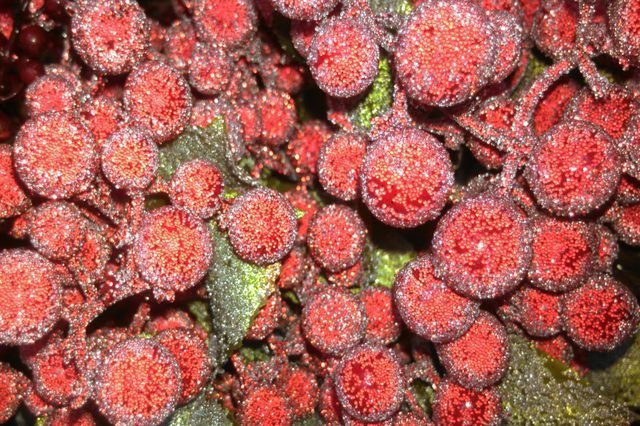
While good for the birds, the fruits of the bayberry bush are not for human consumption. The rendered berries create sweet-scented candles, and freshly cut boughs from the bayberry bush make aromatic decorations or swags for winter festivities. Historically, herbalists used the dried bayberry bark or the shrub's roots in concoctions and infusions to treat a host of ailments from sore throats to infections. Modern herbalists still view the bayberry bush as having highly therapeutic properties.
